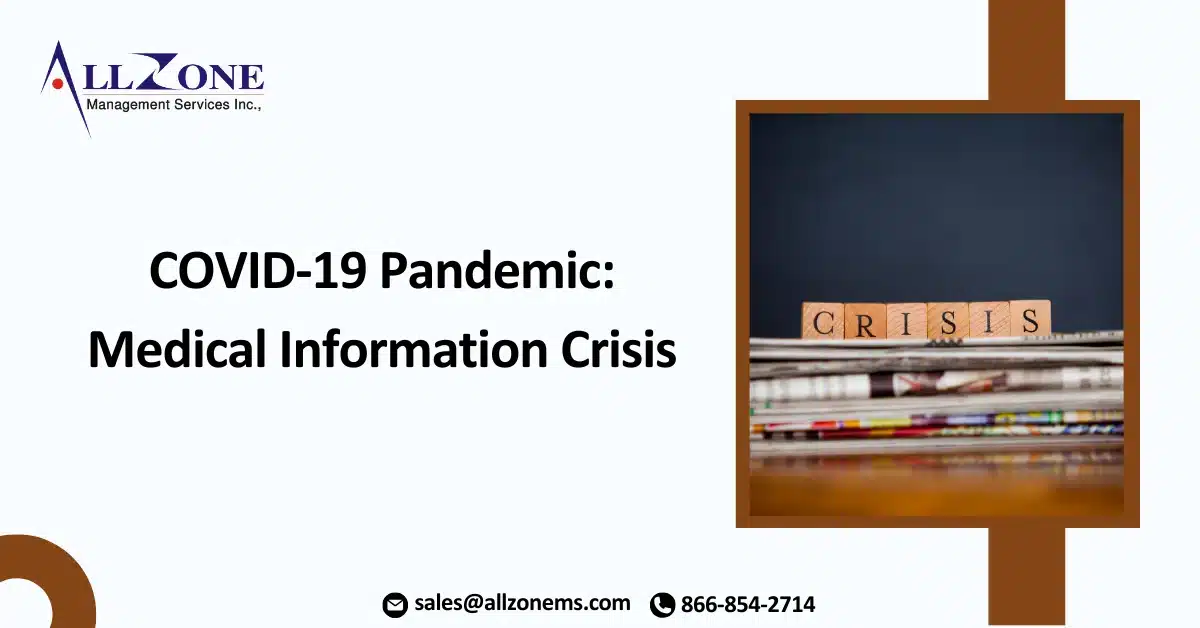A case in point is the information infrastructure of the American healthcare system, which will play a critical role in understanding and battling the COVID-19 pandemic. Just as the capacity of some national health systems have been overwhelmed by the number of COVID-19 cases—most notably in Italy—healthcare providers and professionals in the U.S. run the risk of being overwhelmed with data because the information infrastructure of the American healthcare system is tragically flawed and unable to contend with the immense wave of data being generated by the disease and its aftermath.
The impact of this wave of data will be felt by hospitals, insurers, research institutions, and the myriad government agencies charged with analyzing and responding to the crisis. Moreover, these institutions will be tasked with conceiving new protections for society against recurrent outbreaks of COVID-19 and other future epidemics.
According to FEMA training on communications during emergencies, information can be as important to people as food and water. There are actions that governments (federal, state, and local) can take in cooperation with the private sector to greatly improve our medical information infrastructure. But these governments must move quickly.
At the heart of the problem is the electronic medical record (EMR). It is the nemesis of doctors who have long complained about their hours spent each day on data entry. Once you increase front-line physicians’ caseloads by an order of two or more, it becomes unclear how these clinicians will have time to both treat patients and record their records electronically.
Moreover, electronic medical records were built to track and bill procedures, not generate the insights experts will need such as new symptoms, comorbidities, risk factors, and geographic locations. In fact, with the exception of health plans, current records are unable to track a patient over time, documenting their symptoms and visits at different locations. It is this “longitudinal” story of a patient that is critical in tracking an epidemic.
But that is hardly the end of it. Large numbers of medical records are actually a Tower of Babel that comes in many forms: Word documents, pdfs, XML, JSON, and HL7. With 4 billion electronic medical records currently generated each year in the United States, insurance companies employ armies of workers to translate a fraction of these documents. The documents must be turned into a common language and formatted so that they can be organized, read, and analyzed. Amid a health crisis, timely digitization, dissemination, and summarization of such data can literally mean the difference between life and death for some patients.
In the best of times, extracting key information and insights from large numbers of records is difficult and inefficient, taking weeks or months. Now imagine crucial records regarding COVID-19 patients suddenly pouring into the electronic medical record system by the millions. As currently constituted, our records system is difficult to scale. The quick analysis would be impossible, and many institutions are likely to be overwhelmed.
Finally, there is the issue of interoperability. Even two hospitals that use a medical records solution from the same provider cannot talk to one another. Researchers looking for key insights from medical records would not only need to learn from hospital records, but they would also need to sift through the electronic records of government programs like Medicare and Medicaid. Like the hospitals, most of these institutions will be unable to easily share information with one another or with researchers.
To counter the potential medical information crisis, the US federal government could act swiftly by doing the following:
Use the latest advances in artificial intelligence, machine learning, and natural language processing to normalize unstructured medical records into standard terminologies such as ICD10, ICD10 PCS, SNOMED, LOINC, RxNorm, CPT, or NCI to ensure interoperability and portability of this data. Thus, they could be machine-readable and quickly analyzed for key insights.
To be sure, some institutions are now providing good information to the public and taking steps in the right direction. The Centers for Disease Control is doing the best it can in tracking and analyzing the pandemic based on the limited data provided by local and state health departments. EPIC, one of the two large suppliers of electronic medical records, recently announced that it is issuing a new travel screening questionnaire to its customers to help identify people more likely to be infected by the virus.
But in light of the speed of contagion of COVID-19 and the broad populations at risk, these kinds of actions are nowhere near enough. What we need is greater recognition of the critical place of our medical information in our nation’s infrastructure, and a swift and highly coordinated public-private effort led by the federal government to make it stronger.
For More Information: https://hitconsultant.net/2020/03/31/covid-19-pandemic-prevent-the-oncoming-medical-information-crisis/#.Xo2728gzbIU

